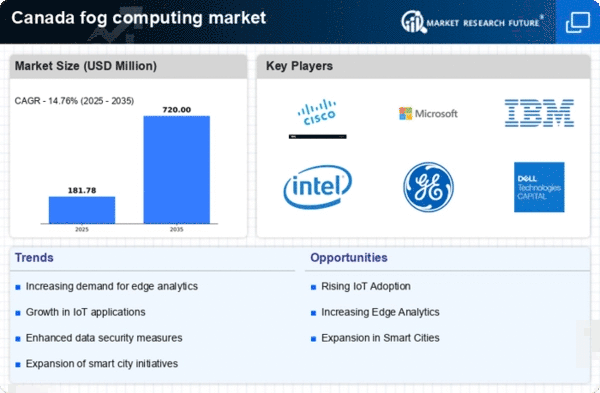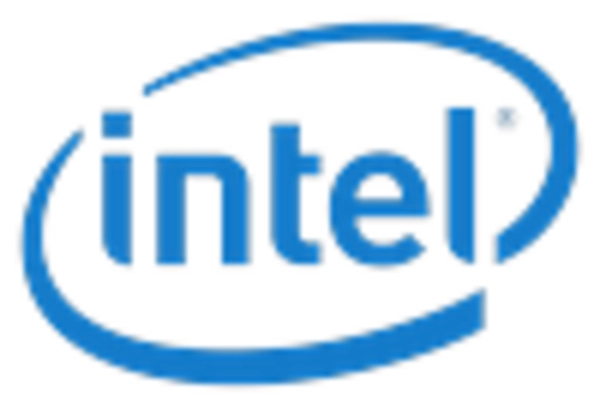Expansion of IoT Ecosystem
The expansion of the Internet of Things (IoT) ecosystem is a pivotal driver for the fog computing market in Canada. With the proliferation of connected devices, there is an increasing need for efficient data processing and storage solutions that can operate closer to the data source. This trend is particularly relevant in sectors such as agriculture, transportation, and energy management, where IoT devices generate vast amounts of data. The fog computing market is expected to benefit from this growth, as it provides the necessary infrastructure to handle the data influx. Reports indicate that the number of connected devices in Canada is anticipated to reach over 1 billion by 2026, further emphasizing the need for robust fog computing solutions. As organizations seek to harness the potential of IoT, the fog computing market is likely to see substantial investment and innovation.
Growing Focus on Edge Computing
The growing focus on edge computing is significantly influencing the fog computing market in Canada. As organizations seek to enhance their operational efficiency, the need for decentralized computing solutions becomes increasingly apparent. Edge computing, which involves processing data closer to the source, aligns seamlessly with the principles of fog computing. This synergy is particularly beneficial for industries such as telecommunications and smart grid management, where latency and bandwidth constraints are critical concerns. The fog computing market is expected to capitalize on this trend, as businesses look to implement edge solutions that can improve data processing capabilities. Analysts suggest that the integration of edge computing with fog computing could lead to a market growth rate of around 30% in the coming years, highlighting the potential for innovation and development.
Government Initiatives and Support
Government initiatives and support play a crucial role in shaping the fog computing market in Canada. Various federal and provincial programs are being implemented to promote the adoption of advanced technologies, including fog computing. These initiatives often focus on enhancing digital infrastructure, fostering innovation, and encouraging public-private partnerships. For instance, funding opportunities and grants are available for businesses that invest in fog computing technologies. This support not only accelerates the development of the fog computing market but also helps Canadian companies remain competitive on the international stage. As a result, the market is likely to witness increased collaboration between government entities and private sector players, driving further advancements in fog computing solutions.
Increased Investment in Cybersecurity
Increased investment in cybersecurity is emerging as a vital driver for the fog computing market in Canada. As organizations become more aware of the vulnerabilities associated with data transmission and storage, there is a heightened emphasis on securing fog computing infrastructures. This trend is particularly relevant given the rise in cyber threats targeting IoT devices and networks. Companies are allocating substantial resources to enhance their cybersecurity measures, which in turn fosters the growth of the fog computing market. It is estimated that Canadian businesses will invest over $10 billion in cybersecurity solutions by 2027, indicating a strong commitment to safeguarding data integrity. This focus on security not only protects sensitive information but also builds trust among consumers, further propelling the adoption of fog computing technologies.
Rising Demand for Real-Time Data Processing
The fog computing market in Canada is experiencing a notable surge in demand for real-time data processing capabilities. Industries increasingly rely on instantaneous data analysis, making localized computing solutions paramount.. As industries increasingly rely on instantaneous data analysis, the need for localized computing solutions becomes paramount. This trend is particularly evident in sectors such as manufacturing and healthcare, where timely decision-making can significantly impact operational efficiency. According to recent estimates, the fog computing market in Canada is projected to grow at a CAGR of approximately 25% over the next five years. This growth is driven by the necessity for reduced latency and enhanced data management, which are critical for applications like IoT and smart devices. Consequently, businesses are investing in fog computing solutions to optimize their data workflows, thereby propelling the overall market forward.

















Leave a Comment